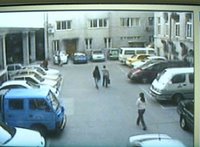 I have updated this discussion in 2011 with a new posting discussing more current technology. The reader would do well to read this essay to gain some insight into the issues of sibling testing, and then the essay dealing with current and improved technologies.
I have updated this discussion in 2011 with a new posting discussing more current technology. The reader would do well to read this essay to gain some insight into the issues of sibling testing, and then the essay dealing with current and improved technologies.___________________
I have had the opportunity of researching the orphanage histories of several girls that were shown to be "sisters" by DNA testing. In all of the cases the girls were found at locations far apart, and were given different birth and finding dates. In other words, if there weren’t a DNA link, no one would have suspected any relationship. All of the relationships were discovered by the adoptive parents finding orphanage sisters through the newsgroups that looked like their daughters, and, after making contact, having a sibling DNA test performed.
But as I traveled to the various finding locations for these "sisters," I began to believe that there was another explanation for these discoveries. It seemed to me unlikely, for example, that a birth mother would leave one girl at the orphanage and another in a small village 8 miles away. As the number of "found" sisters began to multiply, I became highly suspicious. It is of course possible that these matches are true sibling matches, but the analyst in me pushed for a more likely explanation.
So I took a trip to Genetree in Salt Lake City. I sat down with one of their geneticists, and explained my experiences. In summary, this is what I learned about sibling tests:
Genetree (and most other DNA labs) tests 27 genetic markers ("Locations") when doing sibling tests. They will draw a DNA sample from both children, and compare the 27 tested markers from each child against each other, as well as against a DNA database. The database is made up of DNA samples from all over Asia, including Japan, Korea, Vietnam, etc. If the two tested children are not identical twins (sharing exactly the same DNA), the results are compared to the lab's DNA database, and a probability quotient is calculated. In the case of Genetree, my contact admitted that the DNA sampling in their database from China is very small.
Each of the 27 markers has a probability quotient assigned to it. For simplicity's sake, I will limit this discussion to just one location, or marker. Let's assume "Marker 4" has four possible outcomes, 12, 13, 16, and 18. The probability of each result occurring ( as determined from the lab's DNA database) is 5% (value 12), 10% (value 13), 25% (value 16) and 60% (value 18) in a given population. If two children are tested, and both carry "value 12", then there is a very high probability that the two children are related (I will leave the exact probability to a Statistician). These probabilities are compiled from all 27 markers, and a sibling probability percentage is applied.
Without DNA from the birthparents, the tests will either confirm a relationship (Composite probability greater than 90%) or preclude a relationship (probability less than 15%).
I asked the technician if it was possible that the DNA pool from a small city or village in China might differ statistically from the database DNA, and thus allow false positives to occur. He admitted that this was possible.
In other words, it is possible that due to the limited movement of people in China, that genetic “abnormalities” develop in cities and villages. Instead of a 5% probability of “value 12” being in a given population, for example, it might be 20% or 50% or 75%. Thus, two children might be tested and given a high probability of being siblings, when in fact that is not the case – a false positive.
I believe this is happening in the adoption community. I believe that if we took a significant sample of DNA from Jiangmen, Fengcheng, or many other Chinese cities, and tested it against the Asian DNA database of the U.S. testing labs, we would "discover” many sibling pairs. But if we tested these same children against a much larger DNA sample drawn from their own cities or villages, the tests would show no relationship.
At this point I am very reluctant to put stock in the results of these tests because of the limited DNA samples that are from China, and more specifically from the many regions of China. Unless the children are determined to be identical twins, I would be cautious about forming sibling relationships until further research is done to verify those results.





